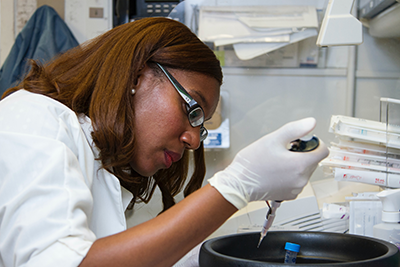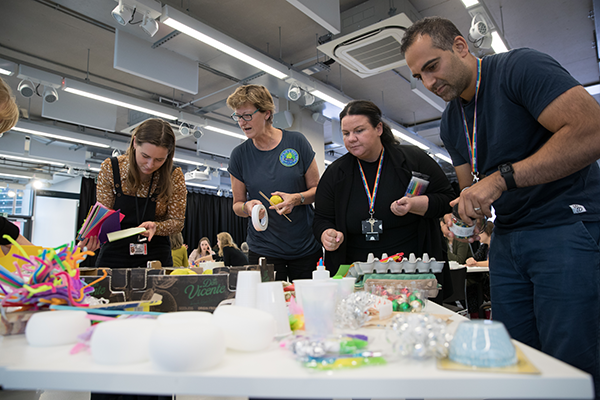Rare Disease
Why Rare Disease?
Rare diseases are defined as conditions affecting no more than 5 per 10,000 people (although in actuality, many of these disorders affect are much rarer, with sometimes only a handful of cases per country or even globally). Although the number of people living with any single rare disease will by definition be small, the fact that there are 6-8000 separate diseases under this umbrella of ‘rare’ means that these conditions pose a major public health and social challenge.

The JWMDRC as a seat of rare disease expertise

The core focus of the John Walton Muscular Dystrophy Research Centre is, naturally enough, Neuromuscular diseases (NMDs), particularly inherited conditions. However, over the past decade the JWMDRC has shaped a unique reputation as a seat of ‘rare disease’ expertise, housing individuals with a strong understanding of the policy and strategic framework in which individual RD research and exemplary care can take place (indeed, in some cases our Centre actively shapes this framework). Our NMD experiences provide unique insight in assessing optimal approaches to the diagnostics, treatment, research, care and social support for people living with any and all types of rare diseases.
Our ‘cross-cutting’ strategic and policy-oriented rare disease leadership is demonstrated through our role in initiatives such as:
Rare 2030, a foresight study delivering a broad range of high-level recommendations to guide European countries to the future the rare disease field most wishes to see
European Joint Actions for Rare Diseases (RD-ACTION and the EUCERD Joint Action), which elaborated and implemented policies on everything to genetic testing to national policies, registries to codification, and –crucially- supported the development and launch of 24 European Reference Networks;
European Joint Programme for Rare Disease research (EJP RD), a 5 year Horizon 2020 initiative in which we are exploring the potential to translate a particularly successful model created by our NMD experts here in the centre (the TREAT-NMD Advisory Committee for Therapeutics) into other rare disease communities, to enhance trial-readiness and avoid avoidable failures
Share4Rare, advancing patient-centred research and reducing isolation through innovative matchmaking technologies
RD-Connect, delivering a bespoke platform to support diagnostics in any and all rare diseases, through integration of genomic and clinical data
These initiatives have been concentrated particularly in the Networking team, as success here demands excellent multidisciplinary and multinational collaboration: we have worked closely for over a decade with key stakeholders including patients, policymakers, industry, researchers, and clinicians from all over Europe, to facilitate an understanding of ‘what works’ for different disease areas and different geographical regions.
What’s next?
From 2020, our rare disease activity has been evolving in new directions, with an eye to even greater impact both close to home and on the global stage.
Rare Disease in the Region
The JWMDRC played a leading role in establishing and now coordinating the Newcastle University Centre of Research Excellence (NUCoRE) in Rare Disease, which unites over 90 experts from across the three Faculties of the University and the Newcastle upon Tyne Hospitals Trust. We are simultaneously defining an even broader Newcastle Rare Disease community - in which this NUCoRE will function as the research arm – which will unite the diversity of expertise here in Newcastle to create an outward-facing entity to celebrate our unique rare disease strengths and increase our visibility and competitiveness. This community is enabling us to play a key role in the new Academic Health Sciences Centre, known as ‘Newcastle Health Innovation Partners’.
 From the JWMDRC to the World
From the JWMDRC to the World
The Centre is committed to delivering on the University’s vision on impact and excellence, ‘from Newcastle, to the world’. We are exploring how to translate our successes in shaping diagnostics, treatment and care for NMDs into other world regions, to better understand and address their particular challenges. Once again, our team will use NMDs as an exemplar to create a broader rare disease awareness and identity in countries and regions where this is lacking, by aligning our policy work with the UN Sustainable Development Goals and the exciting developments in rare disease at WHO.